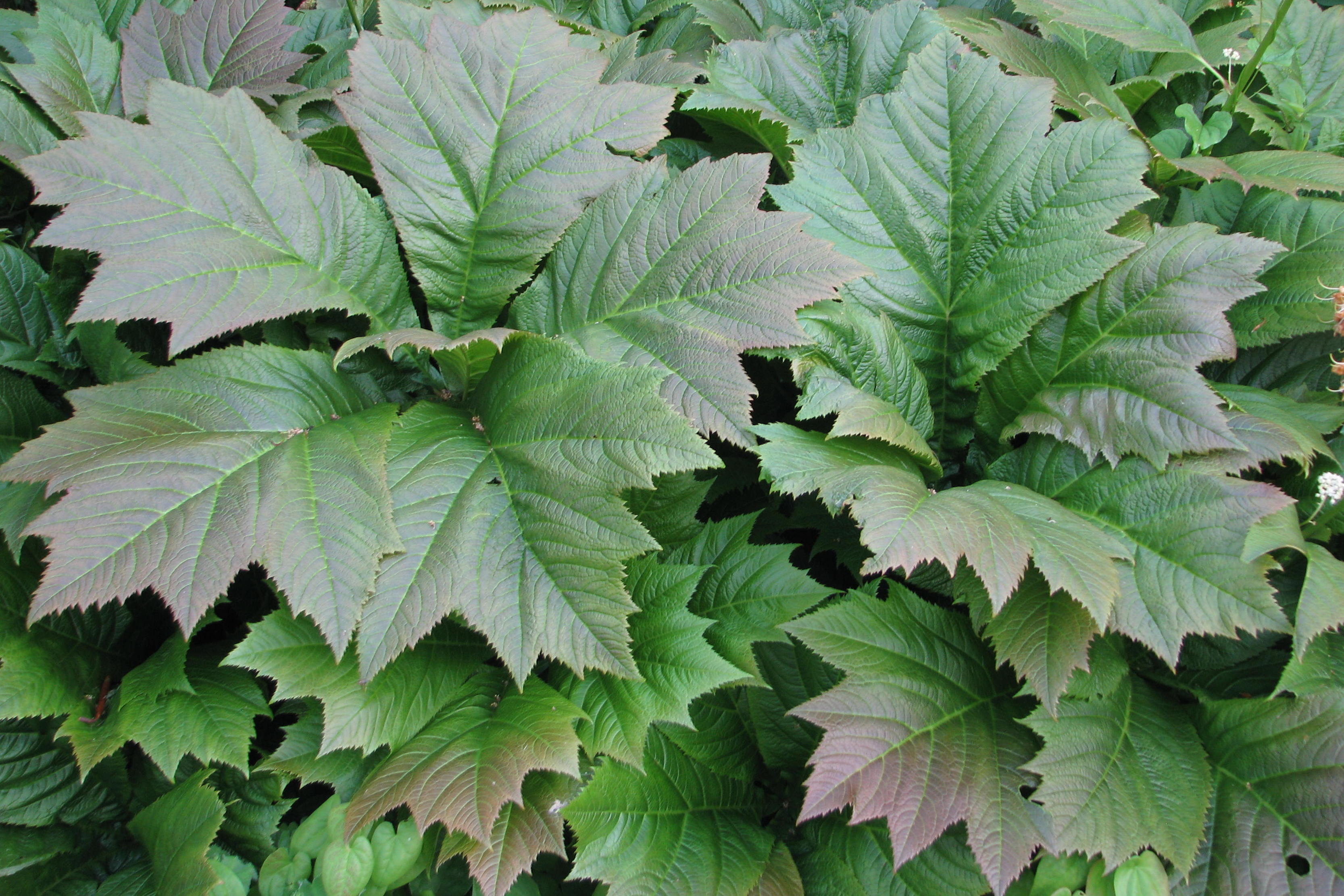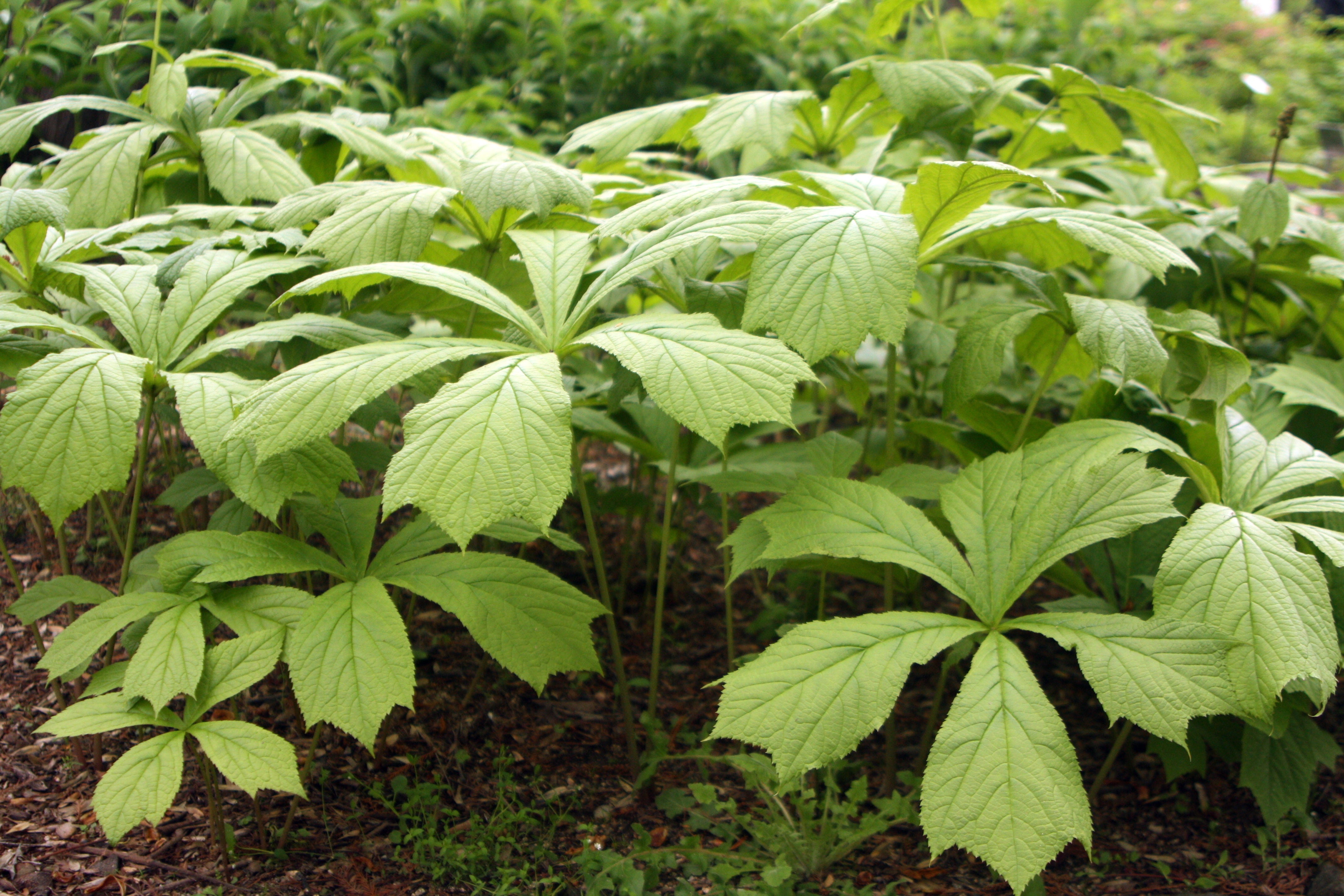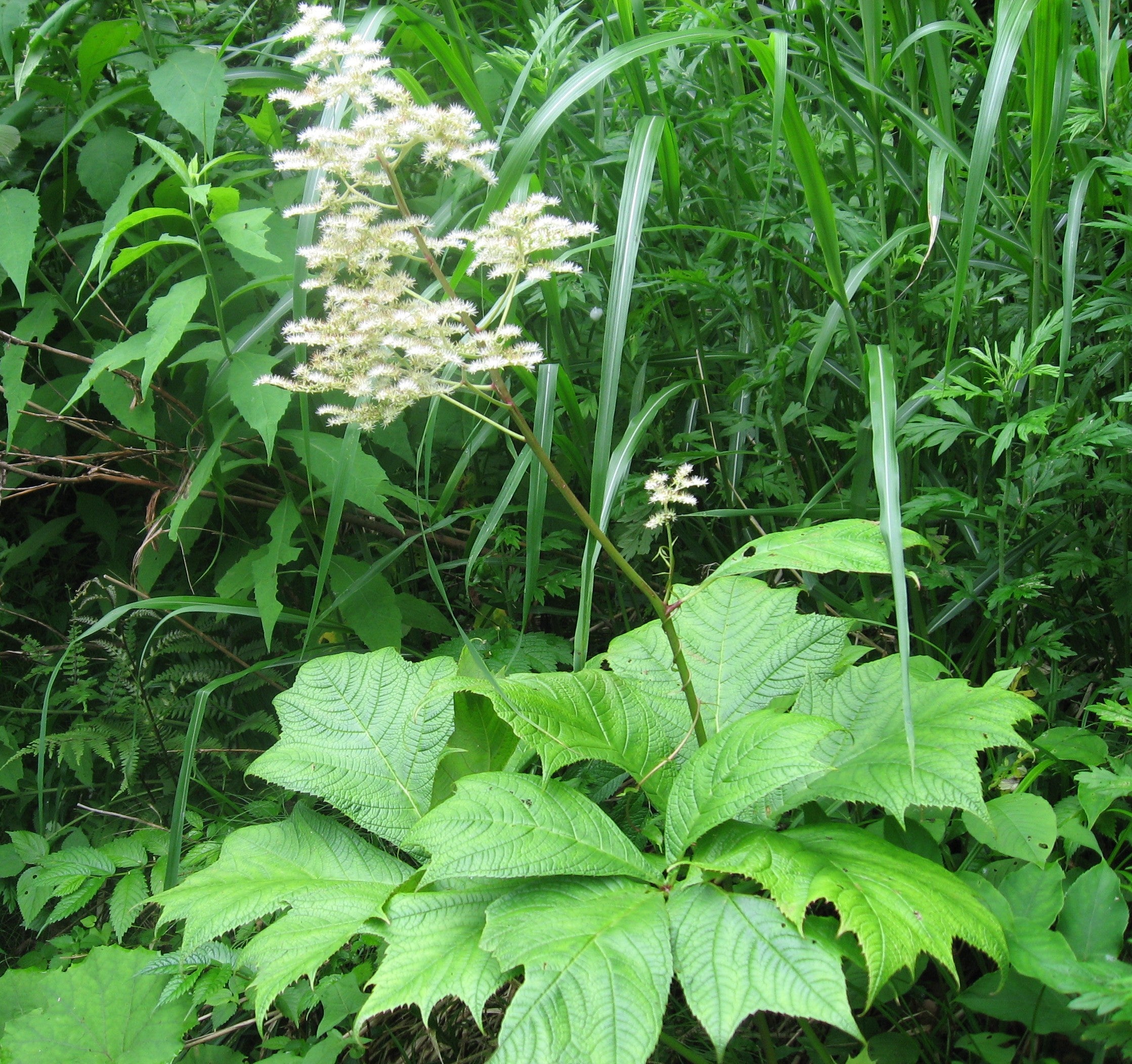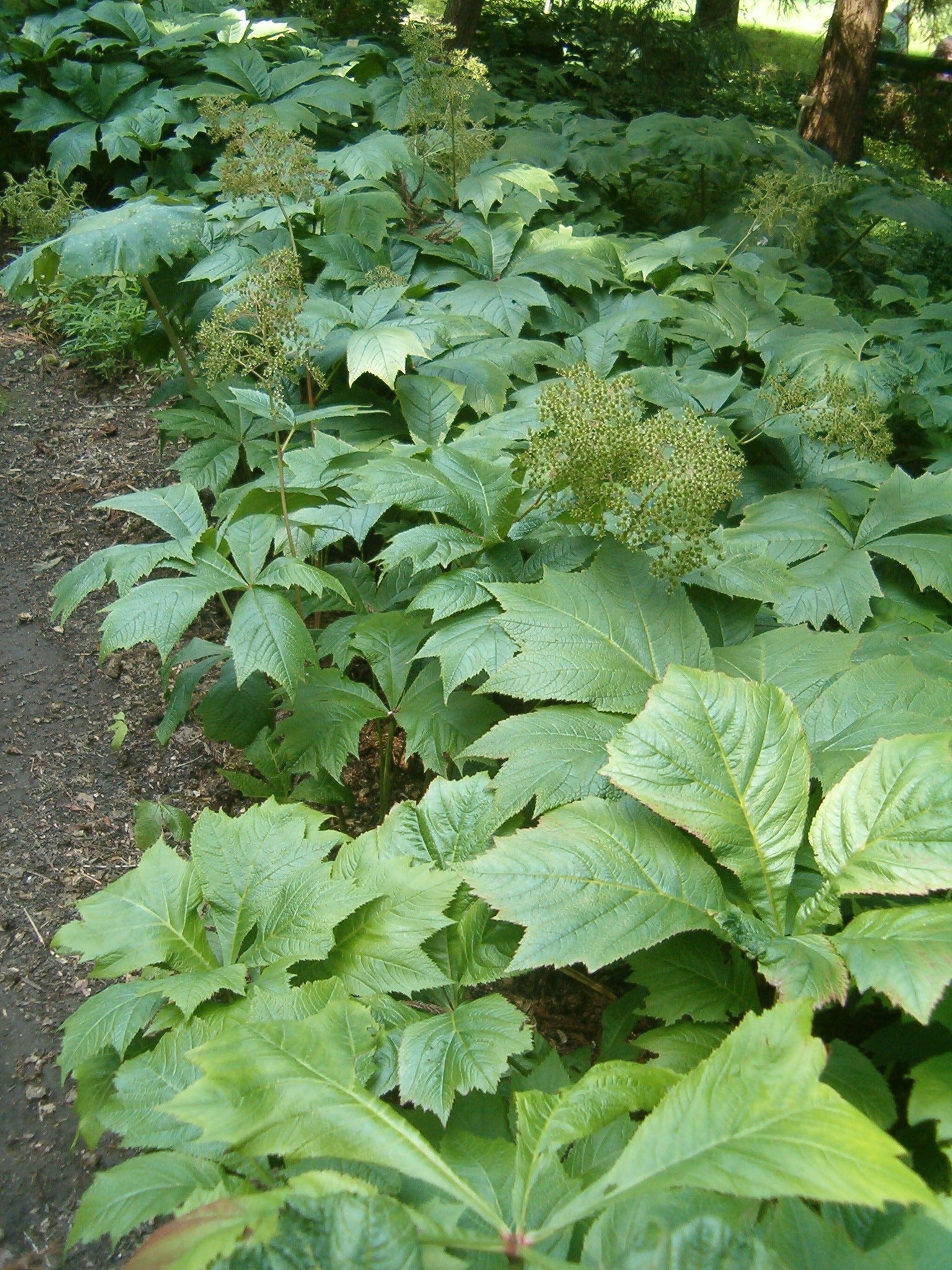Rodgersia podophylla
Approx. 0.5 litre pot
About this cultivar:
Rodgersia podophylla is a bold, clump-forming, rhizomatous perennial that is native to shaded slopes, moist woodlands and stream banks in Japan and Korea. Although the summer-blooming, astilbe-like, creamy-white flowers in foot-long clusters are ornamentally attractive, it is the large, coarsely-toothed, palmate, green to bronze-green leaves that primarily attract gardeners to this plant. This is a substantial perennial that typically forms a spreading foliage mound to 3 foot (90cm) tall. The leaves emerge bronze-green in spring, mature to green in summer and finally turn bronze-red in autumn – much more so than these photos show!
Specific epithet comes from the Greek words for foot (podos) and leaf (phyllon). I feel it has a jungle-ish prehistoric feel to it!
- Position: Full sun (if enough moisture), partial shade, full shade
- Soil: Almost any soil, grows well in Ballyrobert
- Flowers: June, July, August
- Other features: Dappled Shade or Full Shade Loving, Woodland Plant, Interesting Foliage or Fruit
- Hardiness: Fully hardy, grows well in Ballyrobert, H6 - Hardy in all of UK and northern Europe (-20 to -15°C)
- Habit: Clump forming
- Foliage: Deciduous
- Height: 105 - 135 cm (3.5 - 4.5 ft)
- Spread: 105 - 250 cm (3.5 - 8 ft)
- Time to full growth: 2 to 5 years
- Plant type: Herbaceous Perennial
- Colour: Green, pink, white
- Goes well with: Iris, Primula, and Astilbe
About this genus:
Rodgersia (rod-jer-se-a) is a genus of flowering plants in the Saxifragaceae family originating from east Asia. The genus was designated by the American taxonomist, A.Gray, in 1885, who named it after the US Admiral, John Rodgers, commander of the expedition in which R. podophylla was discovered in the 1850s. By 1871, Rodgersia was present in the United States and was flowering in the Imperial Botanical Garden at Saint Petersburg and in 1878, seed brought back to a British nursery, Veitch & Sons, produced flowering plants.
The spread of the compound leaves can be large, making them architectural type plants. The flowering stems rise above the foliage and the panicles of flowers, although lacking true petals, are spectacular and colourful being white, cream, pink, or red.
The leaves of many varieties are attractive in the Spring when, grown in good light, they have a bronze or copper hue. In the autumn, the leaves turn attractive shades of coppery-brown. The seed heads are also attractive, those of many R. pinnata are claret coloured which deepens as winter progresses.
In their native habitats they grow by streams and in shady moist woodland. In cultivation they thrive in soil that never dries out but is not waterlogged. Despite being shade lovers they will grow in sun if they have enough moisture but they are susceptible to wind-scorch.
As you can imagine for plants that like shade and moisture they are very popular with us and our local customers who often see them growing along side Iris, Primula, and Astilbe in a shady border next to our nursery where the water run-off collects. But don't let this limit you to damp shady areas - they are truly wonderful plants that deserve some room in any part of the garden.
















